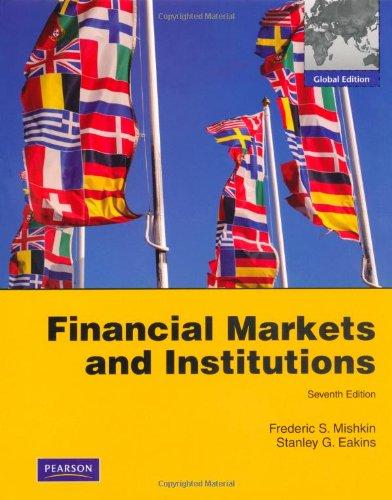Answered step by step
Verified Expert Solution
Question
1 Approved Answer
please type your answer here thanks Question 3 We use the same setting in our lecture note 7.3.1 Dividend Signaling Example. Again, there are two

please type your answer here thanks
Question 3 We use the same setting in our lecture note "7.3.1 Dividend Signaling Example". Again, there are two types of firms: Good with q -0.1 and Bad with q -0.9, half of each kind Now you need $10 for an investment project to get a payoff of $5 with probability q and $20 with probability 1 - q. Firms have-cash with C-3 1.05 But this time, there is a corporate tax rate T-20% on equity For simplicity, assume risky debt is not an option, so firms can raise at most S5 +C in debt. a) If Good firm raises $5 + C face value of debt, what is the fraction (a) of the new equity that the firm offers to the market? b) If Bad firm raises $5 + C face value of debt, what is the fraction (a) of the new equity that the firm offers to the market? c) For Good firm, what is the value to old equity after issuing new equity? d) If Good firm raises only equity, what will be the fraction and the value to old equity after issuing new equity? e) Compare your answers in part (c) and part (d). Which financing scheme would Good firm select? However, the market cannot tell the firms. It uses p- 0.5 Using p - 0.5, what is the value of Good firm's old equity given Good firm raises C 5 face value debt? f) Good firm decides to issue only equity as a signal. If this signal is credible, Bad firm will find it suboptimal to follow. Under full information, Good firm that issues equity only will get = 61.05%. The value to old equity of Good firm will be 6.38 g) Verify the signalling strategy is credible. What is the value to old equity of Bad firm? Compare the results with the one that Bad firm does nothing and sits on its cash. Question 3 We use the same setting in our lecture note "7.3.1 Dividend Signaling Example". Again, there are two types of firms: Good with q -0.1 and Bad with q -0.9, half of each kind Now you need $10 for an investment project to get a payoff of $5 with probability q and $20 with probability 1 - q. Firms have-cash with C-3 1.05 But this time, there is a corporate tax rate T-20% on equity For simplicity, assume risky debt is not an option, so firms can raise at most S5 +C in debt. a) If Good firm raises $5 + C face value of debt, what is the fraction (a) of the new equity that the firm offers to the market? b) If Bad firm raises $5 + C face value of debt, what is the fraction (a) of the new equity that the firm offers to the market? c) For Good firm, what is the value to old equity after issuing new equity? d) If Good firm raises only equity, what will be the fraction and the value to old equity after issuing new equity? e) Compare your answers in part (c) and part (d). Which financing scheme would Good firm select? However, the market cannot tell the firms. It uses p- 0.5 Using p - 0.5, what is the value of Good firm's old equity given Good firm raises C 5 face value debt? f) Good firm decides to issue only equity as a signal. If this signal is credible, Bad firm will find it suboptimal to follow. Under full information, Good firm that issues equity only will get = 61.05%. The value to old equity of Good firm will be 6.38 g) Verify the signalling strategy is credible. What is the value to old equity of Bad firm? Compare the results with the one that Bad firm does nothing and sits on its cashStep by Step Solution
There are 3 Steps involved in it
Step: 1

Get Instant Access to Expert-Tailored Solutions
See step-by-step solutions with expert insights and AI powered tools for academic success
Step: 2

Step: 3

Ace Your Homework with AI
Get the answers you need in no time with our AI-driven, step-by-step assistance
Get Started


